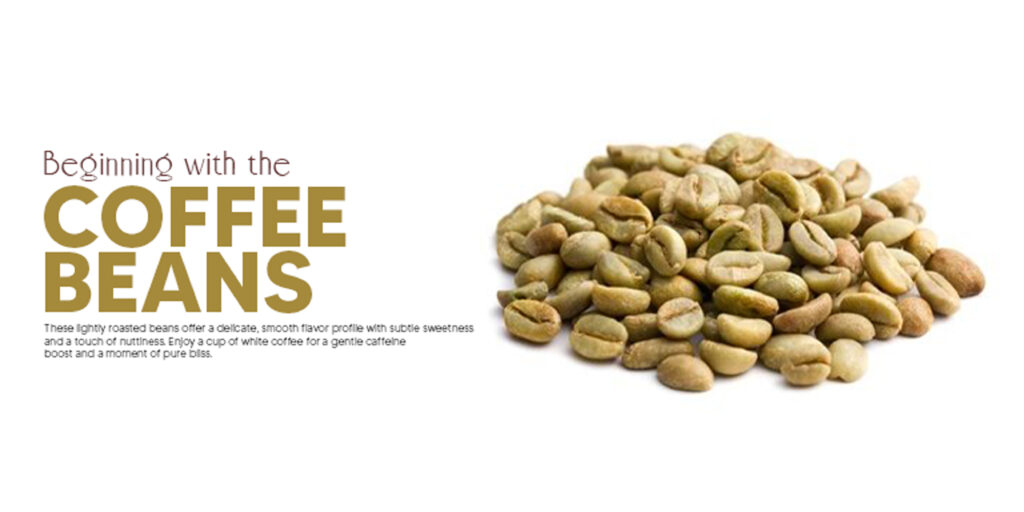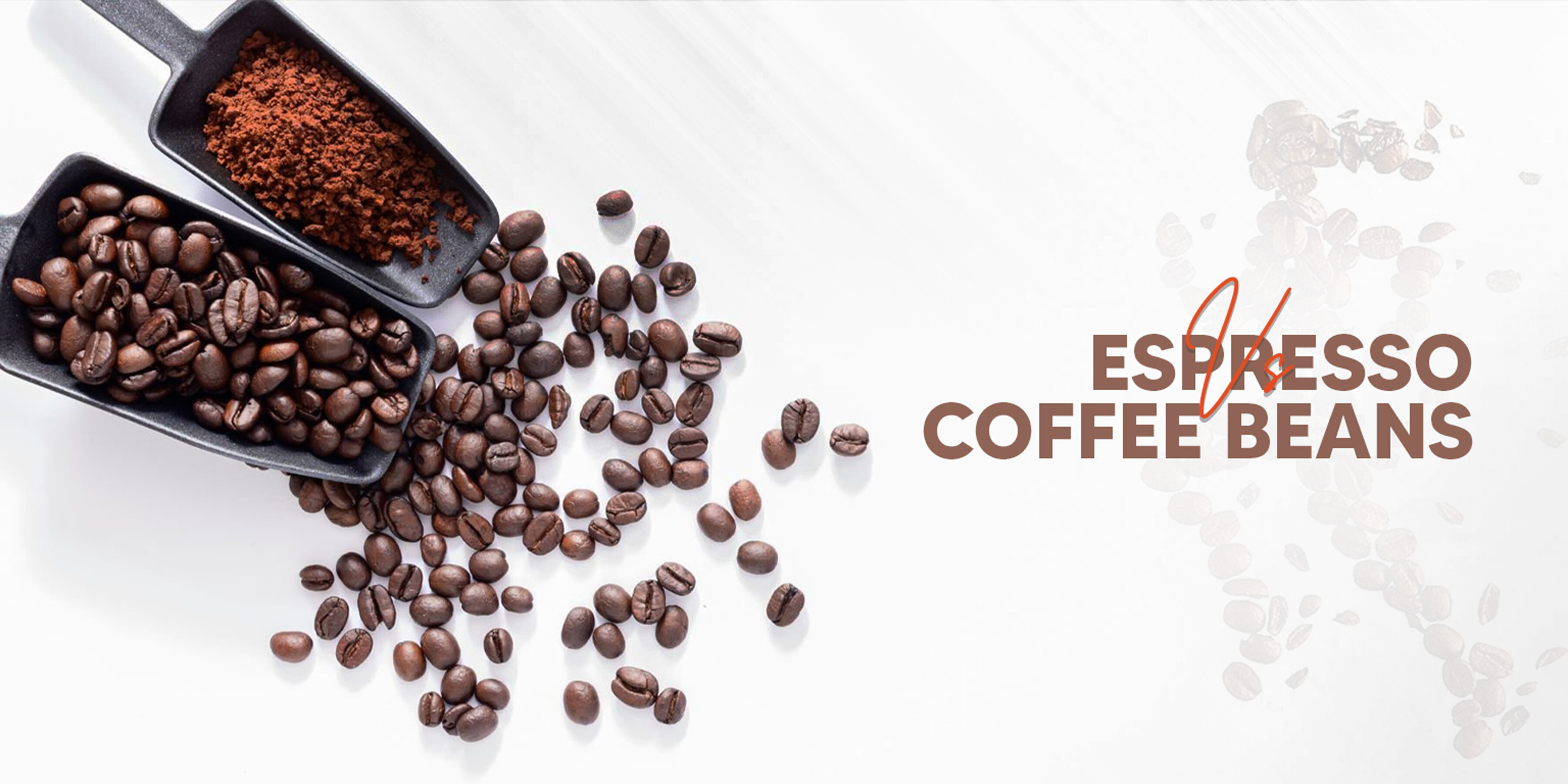Espresso Beans vs Coffee Beans – Which One Brews Best? Introduction: Espresso Beans vs Coffee Beans A brief introduction to...
Read MoreCubano Coffee: Unleash the Secrets Behind Its Rich

Introduction
Highlight the unique taste of Cubano coffee.
Cubano coffee is a rich and flavorful espresso style originating from Cuba, known for its unique preparation method and bold taste. This traditional brew features finely ground coffee beans mixed with sugar, creating a sweet and creamy texture that elevates the coffee experience. Renowned for its robust flavor profile, Cubano coffee is often enjoyed in small, strong shots, making it a favorite among coffee enthusiasts. As you explore the world of coffee, don’t miss the chance to indulge in authentic Cubano coffee, which captures the essence of Cuban culture and offers a delightful twist to your coffee routine.
Why it’s a must-try for coffee enthusiasts.
People seeking an authentic coffee experience should try Cubano coffee. Pairing sweet whipped demerara sugar with coffee elevates the experience to a sweeter version of an espresso. One of the most distinctive factors of Cuban culture is the creativity poured into their coffee, which is fully expressed when making the velvety “espuma” that tops coffee cups. For coffee lovers who appreciate high-quality coffee, Cubano coffee possesses a multi-faceted, smooth, yet bold flavor that is sure to satisfy them. Nothing can surpass the experience of tasting a freshly brewed cup of Cubano coffee that will surely make up for those who have tasted coffee made from hack-ground beans from various places throughout the world.

What Makes a Cubano Coffee Special?
History and origins.
Cubano coffee, known as Café Cubano, is deeply entrenched in Cuban culture and has its roots tracing back to the 19th century, when coffee was popular to produce on the island. Became a potent symbol of Cuban hospitality and tradition, enjoyed among friends and family. What differentiates Cubano coffee is something about how it’s made. A shot of dark espresso is sweetened with demerara sugar and whipped up into a creamy “espuma,” which gives it richness and a powerful, bold flavor with a smooth, caramel-like sweetness. This methodology complements the flavor of coffee, adding a unique touch, while also demonstrating the ingenuity and warm reception that Cuban coffee culture offers, creating a cherished custom worldwide.
The role of sugar in creating the signature espuma.
Sugar plays an indispensable role in achieving Cubano coffee’s signature “espuma,” the creamy, frothy layer that is a defining feature of this iconic drink. The initial few drops of espresso are pulled, then whipped vigorously with demerara sugar until it dissolves and aerates, creating a thick, yielding head of foam. Not only does this process bring a natural sweetness to the brew, but it also contributes to the texture of the coffee, making these adventurous sippers maintain a balance between their bold, intense shots of espresso and a smooth, caramel flavor profile. It is the puma that gives Cubano coffee its distinctive characteristics, providing a delightful contrast that enhances your experience while showcasing your love for this Cuban pastime.
Ingredients & Equipment Needed
Freshly ground coffee (including Tierra Cubana coffee option).
What kind of coffee beans should be used for Cubano coffee? The secret to delicious Cubano coffee is high-quality, freshly ground coffee beans. A common option is Tierra Cubana coffee, which is roasted specifically to retain the rich, bold flavor of Cuban-style espresso. In addition to high-quality coffee, you’ll want demerara sugar for the signature “espuma,” and an espresso maker or Moka pot for a brew. Freshly Ground CoffeeThe Right Equipment Technique Cubano coffee gets that perfect balance of bold espresso and creamy sweetness by mixing fresh ground coffee with traditional equipment and the right technique. These are the necessary ingredients and tools for an authentic and unforgettable coffee experience.
Espresso machine or stovetop Moka pot.
When choosing between an espresso machine or stovetop Moka pot, coffee enthusiasts often weigh convenience against tradition. An espresso machine offers the ability to brew rich, creamy espresso with precise control, making it ideal for café-style drinks at home. In contrast, the stovetop Moka pot embodies a classic brewing method, producing a strong, aromatic coffee that embodies Italian culture. While espresso machines can be pricey and require more maintenance, Moka pots are affordable and easy to use, making them perfect for beginners. Ultimately, your choice depends on your coffee preferences, budget, and desired brewing experience.

Step-by-Step Cubano Coffee Recipe
Brewing the espresso.
Using espresso is the first and most important step in making real Cubano coffee. Fill your espresso machine or Moka pot with freshly ground coffee (like Tierra Cubana) and tamp it down tight. For espresso, look to a ratio of 1:2 coffee to water for a draw, pulling a thick shot. If you’re using a Moka pot, add water to the bottom chamber, add coffee to the filter, then turn on the heat until steam forces brewed coffee into the top chamber. The end result is a bold, aromatic espresso ideal for being whipped with sugar into the signature “espuma” of Cubano coffee.
Creating the perfect espuma.
The creation of the perfect espuma is the mark of true, authentic Cubano coffee. As the espresso starts to pour, catch the first few drops in a cup with demerara sugar. With a very vigorous whisk (or spatula for arm workout), whisk or stir the mixture until the sugar dissolves and thick gooey cream forms. This “espuma” lends a smooth texture and caramel-like sweetness, softening and balancing the bold intensity of the espresso. The secret is timing and technique. Whisking the espresso while it’s hot gets you a smooth, airy mixture. Perfecting this stage transforms Cubano coffee into a singular and decadent experience that embodies the essence of the Cuban coffee tradition.
Variations & Serving Suggestions
Adding milk for a Café con Leche twist.
A steamed milk twist on traditional Cubano coffee is a Café con Leche! This variation adds the strong, sweet notes of Cubano coffee with the creamy richness of milk to create a smoother, more indulgent drink. Then, pour the prepared Cubano coffee, with its signature bubbles, over a cup of warm, foamy milk. Café con Leche is great for people who love a mellower, creamier brew but still want to experience the unique sweetness of Cubano-style espresso. It’s a perfect option for breakfast or an afternoon snack, demonstrating the flexibility of this Cuban staple.
Pairing ideas for the best experience.
Cubano coffee tastes even better when served with the right stories. Its strong, sweet flavor pairs well with rich, buttery pastries such as croissants or Cuban pastelitos. Savory options include pairing it with toasted Cuban bread or serving it alongside a ham and cheese sandwich. Desserts, on the other hand, ideally of the chocolate variety, like flan or dark chocolate truffles, work quite well with its sweetness, which is almost caramel-like. For a classic accompaniment, smoke it with a cigar or, after a meal of Cuban food such as Ropa Vieja. Such combinations strengthen the distinct tastes of Cubano coffee, providing a glorious treat for those who appreciate great coffee.
Invite readers to share their experiences and favorite coffee brands.
Cubano coffee provides a sweet, rich espresso that is not to be missed if you consider yourself a coffee lover. We want to hear about your history with this classic drink! Have you tried recreating it at home, or perhaps even have found a favorite coffee brand, like Tierra Cubana, which really gets its authentic taste? Let us know in the comments what you think, your tips, and your favorite variations. Whether you’re an old hand at drinking coffee or just getting into the Cuban coffee traditions, your tips can help others discover this vibrant, flavorful world. Leave a comment, and let us toast the master of coffee “together.”
Popular Posts
Master the Art of Espresso Coffee: Secrets to the Perfect Brew
Master the Art of Espresso Coffee: Secrets to the Perfect Brew I. Introduction to Espresso Coffee What Makes Espresso Unique?...
Read MoreBarista-Approved Coffee Syrups You Can Use at Home
Coffee Syrups: Discover the Best Flavors to Elevate Your Morning Brew! I. Introduction to Coffee Syrups Definition of coffee syrups...
Read MoreCoffee Urns: Top Tips for Choosing the Right Model for Your Home or Office!
Coffee Urn: Elevate Your Gathering with Perfectly Brewed Coffee! I. Introduction to Coffee Urn A brief overview of what a...
Read MoreHealth Benefits of Decaf Coffee: A Smarter Way to Enjoy Your Brew
Health Benefits of Decaf Coffee: A Smarter Way to Enjoy Your Brew Introduction Discuss the growing trend of decaf coffee....
Read More
Introduction to Coffee Beans
A brief overview of what coffee beans are
Coffee beans are the seeds of the Coffee plant, the raw material of one of the most popular beverages in the world. Coffee beans fall into two main categories: Arabica and Robusta, each of which possesses unique tastes and qualities that appeal to a variety of tastes. Coffee beans are grown and harvested in the lush coffee-growing regions. For coffee lovers looking to improve their brewing experience, knowing the origins, types, and processing methods of coffee beans is essential. Frog not only provides a brief overview of what coffee beans are but will also help you venture into the world of beans.
Importance of coffee beans in the coffee industry.
Coffee beans are the main ingredient for all coffee around the world, making it one of the most important commodities in global coffee consumption. These beans both shape the flavor and scent of the final brew and reverberate through the economy of coffee-producing countries. This significant price gap between cheap and premium beans makes them a commodity important to international trade. Moreover, with Arabica and Robusta varieties of coffee beans, there is a wide array of tastes and brewing styles that fit the tastes of modern consumers. Understanding the significance of coffee beans makes it easy to appreciate the sophistication behind this delicacy.
Types of Coffee Beans
Arabica Beans
Arabica beans are sought after for their higher quality and sophisticated taste, making them the most popular type of coffee globally. Commonly smooth and mild in flavor, Arabica beans can have flavorings such as fruit, floral, and mild acidity. These beans [are grown at higher altitudes at cooler temperatures, lending them gentle flavor nuances. Offering a grander coffee experience for connoisseurs, Arabica beans have a lower caffeine content than varieties such as Robusta. A close look at the flavor profile and characteristics of Arabica beans is important for coffee lovers who are on the lookout for premium coffee.
Popularity and growth regions.
Arabica beans make up the largest share of the coffee market, roughly 60-70% of all coffee, with a better flavor and aroma than its counterpart. However, their popularity has a lot to do with consumers’ desire for fancy coffee. These beans grow in distinct regions, mostly between the Tropics of Cancer and Capricorn, such as Brazil, Colombia , and Ethiopia. Brazil leads in coffee production with wild flavors, while Colombia is renowned for its smooth, well-balanced cups. Understanding the factors influencing Arabica bean popularity helps coffee lovers appreciate their favorite coffee’s subtleties and origins.
Robusta Beans
Compared to the more delicate Arabica variety, Robusta beans have distinct characteristics and a robust flavor. These beans are higher in caffeine, which is responsible for their bitterness as well as earthy, nutty flavor profile. Robusta beans, for example, thrive at lower altitudes and are more resistant to pests and disease, making them easier to grow. They are frequently utilized in espresso blends to provide body and crema, contributing to the flavor profile of the coffee. These beans are a kind of nuts, and their unique flavor is appealing to people who appreciate a robust cup of full-bodied Joe, making them sought after around the world and a popular choice in many brewing methods.
Comparison with Arabica.
There are key differences between Robusta beans and Arabica that affect flavor, cultivation, and consumer preference when comparing the two. Arabica beans are characterized by mellow, subtle flavors that tend to highlight sweetness and acidity, making them a staple of specialty coffee roasters. Robusta beans, on the opposite end, deliver a rich, bitter flavor with earthy and nutty undertones, appealing to drinkers who enjoy a more fortified beverage. Moreover, Robusta is a hardier and higher-yielding plant that does well at lower altitudes and withstands poor conditions. With that being said, it is important for every coffee enthusiast who wants to enjoy the finest coffee possible in accordance with their taste to understand the difference between Robusta and Arabica.

Liberica and Excelsa Beans
Description and rarity.
In the world of coffee, Liberica and Excelsa beans bring something special to the table. With a floral aroma, Liberica beans are known for their bold, fruity flavor and flavor profile that can, at times, be woody or smoky. Less common than Arabica and Robusta, they are grown mainly in West Africa and Southeast Asia. Excelsa beans, a type of Liberica, contribute a tart, fruity profile with notes of dark chocolate and spice. Adventurous coffee drinkers prize Liberica and Excelsa beans for their rareness and distinct flavors, seeking to try something different.
Flavor notes and uses.
Liberica and Excelsa beans contribute distinctive flavor notes that enhance the coffee experience. Liberica has a big, fruity flavor with floral notes and a woody finish; it is the perfect bean for those looking for something outside the box. Brewers can best showcase their complex flavors using methods like French press or pour-over. With their tart, fruity notes and notes of dark chocolate, Excelsa beans add depth to blends and are frequently used in specialty coffee. These both are ideal for the adventurous coffee drinker wanting to discover new flavors and expand their brewing skillset.
The Coffee Bean Journey
From Seed to Harvest – Coffee cultivation process.
The journey of coffee cultivation is a meticulous process, starting with the selection of high-quality seeds, usually Arabica or Robusta varieties. Nurseries germinate seeds and grow them into healthy seedlings. Farmers then move the seedlings to coffee farms, where they thrive in the best possible altitude, climate, and soil. Coffee plants need maintenance through the years, such as pruning and pest management. The plants bloom and produce cherries, which farmers harvest to make the beans. Careful seed-to-harvest practices result in coffee beans that taste and breed true, ensuring that you get what you paid for high quality; coffee is loved everywhere.
Importance of climate and soil.
Climate and soil are incredibly important in coffee cultivation as they affect the quality and flavor of coffee beans. The ideal conditions for growing coffee are those with uniform precipitation, average temperatures, and abundant sunshine, which are typically located closer to the equator. The high altitude means cherries mature more slowly and have a greater complexity of flavor. Healthy coffee plant growth also requires rich, well-draining soil to allow necessary nutrients to reach the plants and foster strong root systems. Through their experience with climate and soil, farmers learn to produce a product with the quality that drinkers of good coffee would expect.
Hand-Picking vs. Mechanical Harvesting
Benefits of each method.
Hand-picking versus mechanical harvesting: Both methods have their pros and cons depending on producers’ preferences. Hand-picking is an exhaustive and time-demanding craft, accurately letting birds ignore only ripe cherries for collection. This results in beans of higher quality and richer flavor profiles, making them suitable for high-end coffee markets. Larger coffee farms employ mechanical harvesting because it is much more efficient and cost-effective. Though this can result in them collecting unripe cherries, with leaner, more sophisticated mechanical means of doing this, the process is becoming more and more precise. The advantages of each approach are important to know so that coffee can be produced optimally.
Roasting Coffee Beans
The Roasting Process – Stages of roasting and their effects on flavor.
Roasting stages are an important factor in how they develop in terms of flavor and impact on the cup. Roasters heat green coffee beans in three phases: drying, browning, and development, which are the first steps in the roasting process. The drying stage removes moisture, and the browning stage begins caramelization for sweetness and complexity. Roasting goes further into the development stage, deepening flavors and introducing wide-ranging notes from fruity to chocolatey. Depending on the chemical composition of the bean and the roasting method used, the range of flavors can be enormous.
Light vs. Medium vs. Dark Roast
Flavor differences and ideal uses.
Find out more about the flavors of light, medium, and dark roast coffees to help you make the right selection for your next cup. Light roast coffees tend to be bright, acidic, and floral or fruity, making them a great option for fans of an invigorating cup; medium roast takes a middle ground between full and light; it has a balanced acidity with a predominantly rich taste, full of notes of caramel and nut, so that is suitable for regular drinking. In contrast, dark roast coffees provide bold, richer flavors with notes of chocolate and smokiness, an ideal taste for espresso fans and those who enjoy strong tastes. Understanding the differences between the two allows coffee lovers to adjust their coffee roasting preferences to suit their desired flavor profile and brewing method.

Brewing Coffee: The Role of Coffee Beans
Choosing the Right Beans for Your Brew
Knowledge of how compatible coffee types are with different brew styles can be paramount in selecting the coffee right for your brew. With espresso, choose dark roast beans with a strong flavor profile and a thick crema; blends with Robusta can add intensity for coarsely ground medium to dark roasts, which will result in a fuller-bodied cup, complete with rich oils. If you go with drip coffee, get medium roast beans; they have good acidity and sweetness. Choosing your beans according to your brew method means that you greatly enhance your coffee experience, and each cup is the best coffee you can brew.
Grinding Coffee Beans
Importance of grind size in flavor extraction.
Grinding coffee is the key to extracting the taste, and grind size is most important when it comes to flavor extraction. Each method of brewing has its specifications with regard to grind size in order to maximize flavor and aroma. A coarse grind is perfect for when you need a slow extraction, like with a French press, yielding more body and complexity. On the other hand, a fine grind is necessary for espresso, allowing for rapid extraction that produces a robust and concentrated taste. If the particle size is too fine for a drip brew, we risk over-extraction, the culprit behind bitterness. Grind size is an important consideration when making a cup of coffee that is suited to your brew method.
Sustainability in Coffee Bean Production
Ethical Sourcing Practices
Much coffee around the globe is sourced less ethically, though, and organic and fair trade certifications play a big part in promoting successful sourcing practices. Fairtrade certification means the farmers are paid fairly for their beans, supporting sustainable lives and community development. This certification also focuses on sustainable farming practices. One ensures that farmers grow the beans naturally without using synthetic pesticides or fertilizers, while the other promotes soil health and biodiversity through organic certification. Both certifications attract consumers who are aware of sustainability and ethical production methods. Consumers can help support these methods by purchasing fair trade and organic coffee and bridging the gap of a more just way of producing coffee for both farmers and the ecosystem.
Environmental Impact
Sustainable farming techniques and their benefits.
Using sustainable farming techniques helps mitigate the environmental impact of coffee production in the long run by promoting ecological health. For example, shade-grown coffee production protects the natural habitats of other wildlife while decreasing deforestation. Using organic farming techniques that reduce the use of chemicals that kill crops improves soil quality and healthy ecosystems. Methods such as crop rotation and intercropping enhance soil fertility and minimize erosion. Sustainable farming practices can increase coffee yields, climate change resilience, and high-quality beans while protecting the environment. This broad approach works for both sustainability-loving coffee drinkers and the planet.
Health Benefits of Coffee Beans
Nutritional Content
In addition to being a popular beverage, coffee also contains antioxidants and other bioactive compounds that enhance its nutritional profile. Coffee is full of antioxidants, like chlorogenic acids, that fight oxidative stress and lower the risk of chronic disease. Coffee also provides some vitamins and minerals, such as B vitamins, potassium, and magnesium, beneficial for general well-being. Studies find moderate coffee consumption could improve cognitive function and improve metabolic health. But even beyond providing a delightful experience for the senses, these beneficial compounds in coffee may contribute to a balanced diet, allowing caffeine enthusiasts to consume their favorite beverage while gaining potential health benefits that may contribute to good health and longevity.
Conclusion Of Coffee Beans
To sum up, coffee beans aren’t just a shiny black miracle drug but the outcome of many factors throughout the supply chain. Knowing about in-depth flavor descriptions, sustainability in agriculture, and ethical production further increases the respect for this popular beverage. Additional health benefits of coffee, with its many antioxidants and the positively associated impacts of caffeine, also increase interest. Companies that pursue sustainable practices successfully attract environmentally conscious customers and improve their bottom line, as they can fetch higher prices for premium products.
Popular Posts
Master the Art of Espresso Coffee: Secrets to the Perfect Brew
Master the Art of Espresso Coffee: Secrets to the Perfect Brew I. Introduction to Espresso Coffee What Makes Espresso Unique?...
Read MoreEverything You Need to Know About Instant Espresso
The Ultimate Guide to Espresso Beans: What You Need to Know Introduction A brief overview of what instant espresso is....
Read MoreCortadito Coffee: A Must-Try for Every Coffee Enthusiast!
Cortadito Coffee: Why This Cuban Drink Should Be Your Next Favorite Introduction A brief overview of what Cortadito coffee is...
Read MoreThe Ultimate Guide to Espresso Beans: What You Need to Know
Boost Your Day with Instant Espresso: Quick & Delicious! Introduction A brief overview of espresso beans and their significance in...
Read MoreHealth Benefits of Decaf Coffee: A Smarter Way to Enjoy Your Brew
Health Benefits of Decaf Coffee: A Smarter Way to Enjoy Your Brew Introduction Discuss the growing trend of decaf coffee....
Read More








